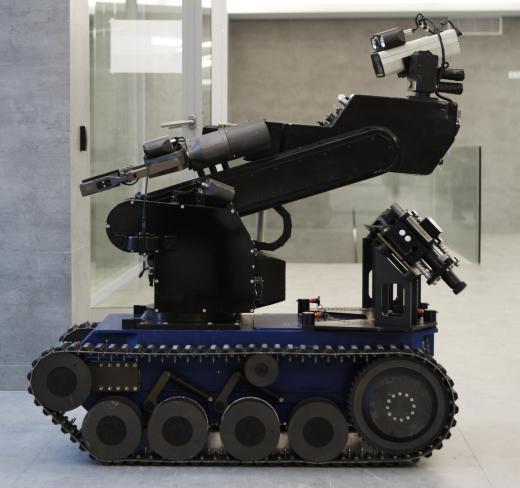Teleoperation is the operation of a robot from a distant location. It is used in space exploration, the oil and gas industry, the military, and the medical field. Robots are typically deployed and controlled through teleoperation because sending humans would be too expensive or too dangerous. Generally, a single operator is in control of the robot and feels some level of immersion in the remote environment. The controls used by the operator are often sufficiently intuitive as to allow rapid and smooth manipulation of the robot.
To allow for the possibility of teleoperation, some sense of telepresence must be created. This can be achieved by using sensors to gather data in the remote environment. For example, in an underwater robot, a sonar sensor may be used to determine the vertical distance to the sea floor. Sonar technology bounces a sound wave off the ocean bottom, recording the time the wave takes to make a round trip. All sensing data can then be recombined for the teleoperator, or human controller, to experience in virtual reality. Once the teleoperator has a good “feel” for the remote environment, he can then control the robot effectively.

On the International Space Station, astronauts in space suits have been used to assemble the station and to perform maintenance. Preparing for an extravehicular activity, or space walk, however, is an expensive procedure that takes many hours. The National Aeronautics and Space Administration (NASA) in the United States is currently designing a robot called Robonaut that will attempt many of these tasks. Robonaut has an upper body that resembles a human and will use teleoperation for control of its arms and hands. The teleoperator will wear a headset and a number of sophisticated sensors to allow for a high level of control and dexterity with the robot.

There are some limits to telepresence technology. Electromagnetic radiation travels at the speed of light and is the fastest way to transfer sensor data from a remote environment. Even at this speed, the round-trip signal delay between Earth and Mars ranges from six to 40 minutes. As a result, rovers on Mars cannot be operated from Earth with much feeling of real-time teleoperation. Operators would need to move to a location closer to the rovers themselves, such as low Mars orbit, for this to happen.
In the oil and gas industry, remotely-operated underwater vehicles (ROVs) are used to service oil extraction equipment in deep ocean waters. They are typically operated from a boat on the surface and have a long cable connecting the operator to the robot. They are usually equipped with lights and cameras to return video signals to the operator. In the past, human divers have serviced such subsea infrastructure, but recent drilling in deeper, more dangerous waters spurred the used of teleoperation with ROVs.
The military uses teleoperation in some situations that are deemed too dangerous for soldiers. ROVs are used by some navies to recover practice torpedoes and investigate other objects on the seafloor. In Iraq, Afghanistan, and Israel, robots are used to approach improvised explosive devices (IEDs) or other potentially dangerous objects.
